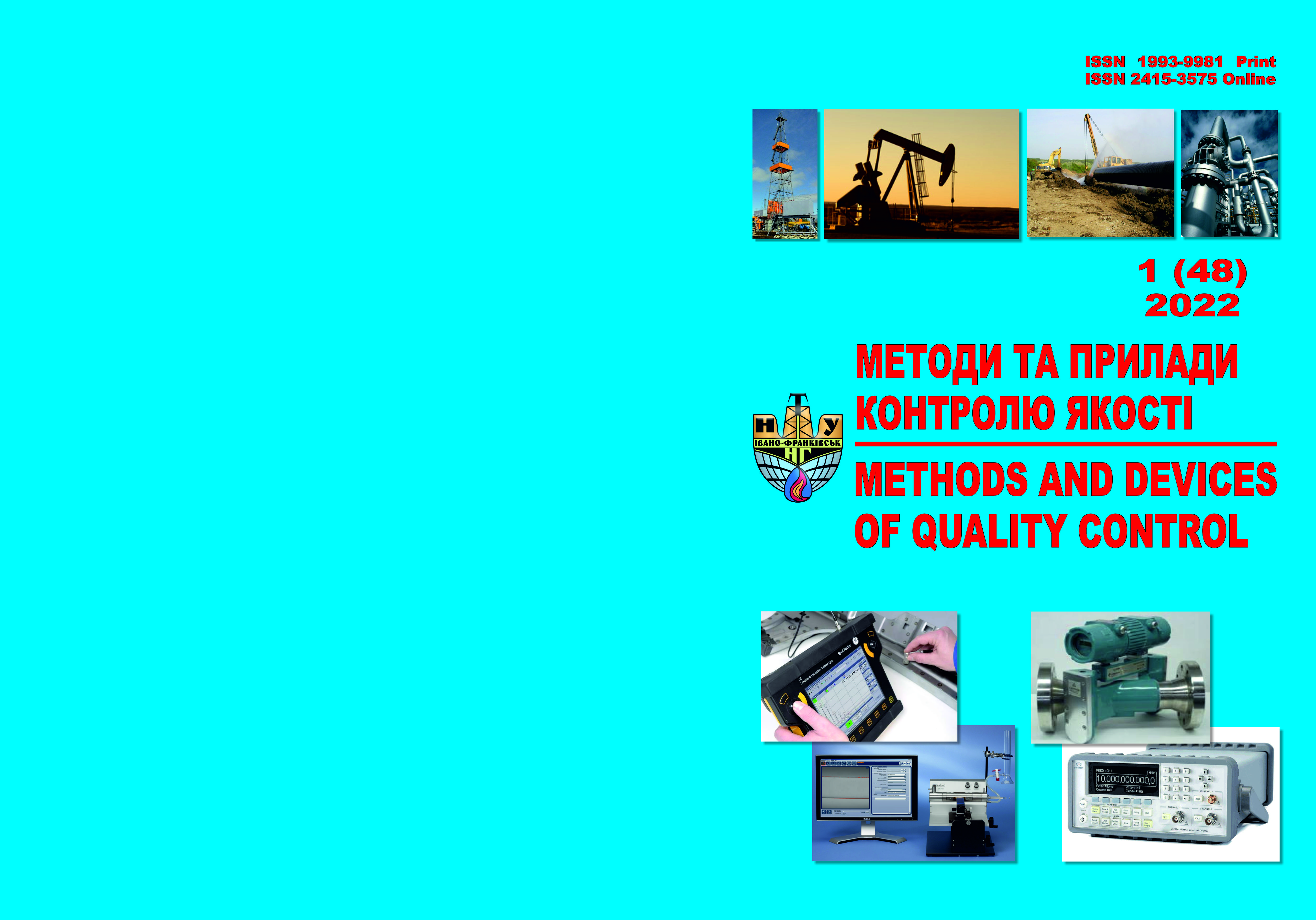МАТЕМАТИЧНА МОДЕЛЬ РОЗРАХУНКУ КІНЕМАТИЧНОЇ В’ЯЗКОСТІ РОЗПЛАВІВ (РІДИН)
DOI:
https://doi.org/10.31471/1993-9981-2022-1(48)-44-49Ключові слова:
математична модель, кінематична в’язкість, розплав, метод послідовних наближень, нестаціонарні методи досліджень, фізико-хімічні властивості.Анотація
У даній статті розглядається математичне моделювання розрахунку кінематичної в’язкості рідини (розплаву) на основі нестаціонарних методів. Обґрунтовано вибір нестаціонарного методу досліджень для здійснення теоретичного розрахунку кінематичної в'язкості розплаву (рідини). Визначено теоретичну основу обраного методу досліджень. Перевірено відповідність результатів числової реалізації теоретичних розрахунків результатам обраного експерименту. Досліджено наявність взаємозв'язків кінематичної в'язкості з іншими фізико-хімічними властивостями розплаву (рідини) на прикладі температури. Розглянуто існуючі стаціонарні та нестаціонарні методи дослідження кінематичної в’язкості, визначено ї переваги та недоліки. Визначено, що теоретичний розрахунок кінематичної в’язкості шляхом числової реалізації математичної моделі обчислюється методом послідовних наближень. За вихідними даними взятого за основу експерименту побудовано ізотерми кінематичної в’язкості. За результатами теоретичних розрахунків побудовано теоретичну криву. Визначено, що теоретична крива та ізотерми розрахунку кінематичної в’язкості за обраною температурою значно наближені, що дає змогу стверджувати про певну точність математичної моделі. В ході аналізу візуалізації вихідних даних обраного експерименту та теоретичної кривої встановлено, що ізотерми змінюються експоненціально. Це вказує на існування залежності в’язкості від фізико-хімічних властивостей розплаву (рідини), зокрема, температури. Характер змін ізотерм та теоретичної кривої збігається.
Завантаження
Посилання
. Kurs fizyky / Za red. I.YE. Lopatynsʹkoho. Lʹviv: Vyd-vo “Beskyd Bit”, 2002
A.M. Tolkachov, O.V. Tretʹyakov. Molekulyarna fizyka i termodynamika. Zahalʹna fizyka. Kyyiv: Akademiya VV, 2007. S. 78-84.
Bilyk R., Liudkevych U., Mudry S. Structure and short range order in liquid Ga. Fizyko-matematychne modelyuvannya ta informatsiyni tekhnolohiyi. 2017. Vyp. 25 S. 7-13.
. Bilyk R. Termodynamichni vlastyvosti ta struktura ridkykh rozplaviv indiyu i haliyu. Visnyk Lʹvivsʹkoho universytetu. 2017. Vyp. 54. S. 30-36.
Pryhunova A. S., Petrov S. S. Budova metalevykh rozplaviv i yiyi vzayemozvʺyazok iz tverdym stanom. Metaloznavstvo ta obrobka metaliv. 2016. №2.
S. 17-29
Krykh H. B. Osoblyvosti zastosuvannya reolohichnykh modeley nenʹyutonivsʹkykh ridyn [Elektronnyy resurs]. Kod dostupu -vlp.com.ua/files/11_46.pdf
Shvydkovskyy E. H. Nekotorye voprosy vʺyazkosty rasplavlennykh metallov. Moskva: Hosttekhyzdat. 1955. 207 s.
Klym N. M., Mudryy S. Y., Petruk A. A. Blyzhnyy poryadok v rasplavakh systemy Pb-Cd. Yzvestyya vuzov. Fyzyka. 1982. № 8. S.109-111.
Sklyarchuk V. M., Yakymovych A. S., Dufanetsʹ M. V.. Rozrakhunok vʺyazkosti rozplaviv systemy Al-Cu. Metallofyzyka y noveyshye tekhnolohyy. 2008. T. 30.
S. 313–319.
Pecharsky V. K.. Fundamentals of powder diffraction and structural characterization of materials. Springer. 2005. 713p.
Mudry S., Shtablavyi I., Liudkevych U., Winczewski S. Structure and thermal expansion of liquid bismuth. Materials Science-Poland. 2015. Vol. 33 (4). P. 767-773.


.png)




